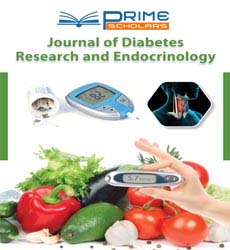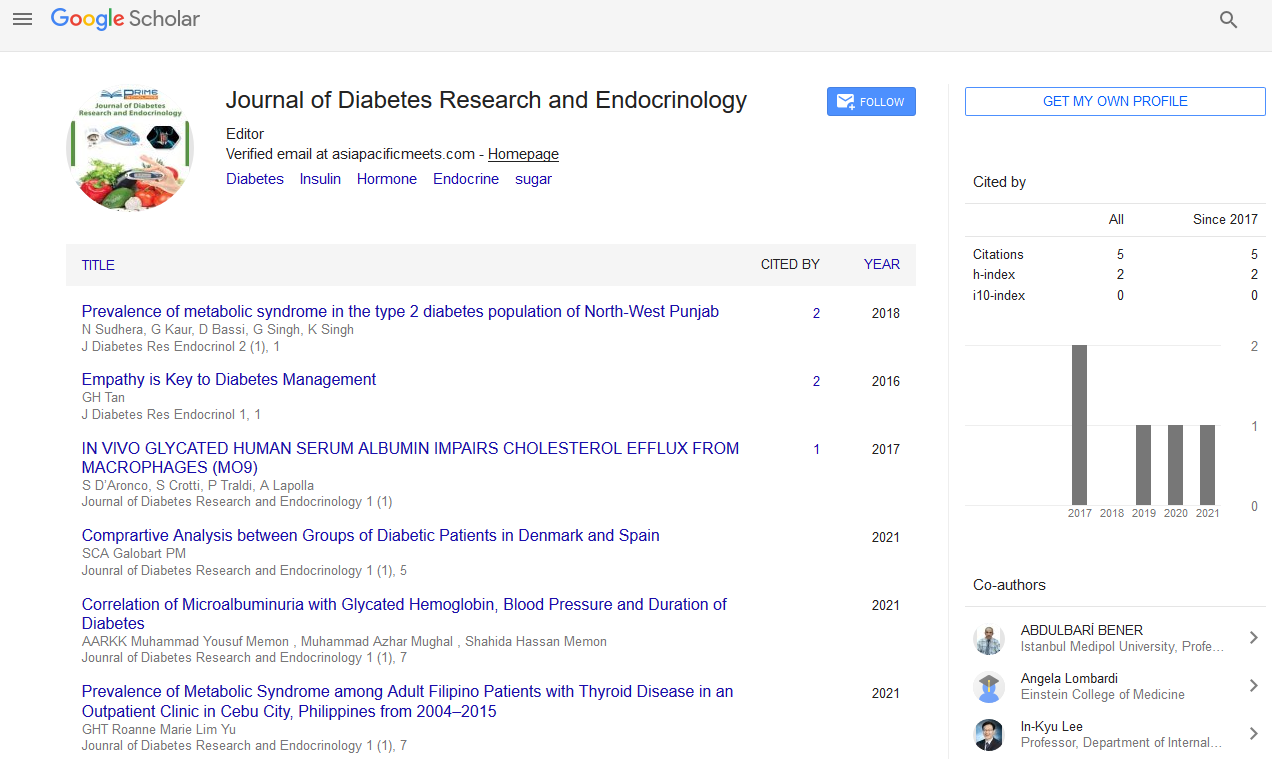Perspective - (2022) Volume 6, Issue 6
Central Diabetes Insipidus is Caused by the Neuroendocrine Disorders contains Antidiuretic Hormones
Morze Karolina*
Department of Endocrinology, University of Antwerp, Belgium
*Correspondence:
Morze Karolina,
Department of Endocrinology, University of Antwerp,
Belgium,
Email:
Received: 01-Nov-2022, Manuscript No. IPJDRE-22-15036;
Editor assigned: 03-Nov-2022, Pre QC No. IPJDRE-22-15036(PQ);
Reviewed: 17-Nov-2022, QC No. IPJDRE-22-15036;
Revised: 22-Nov-2022, Manuscript No. IPJDRE-22-15036(R);
Published:
29-Nov-2022, DOI: 10.36648/IPJDRE.6.6.34
INTRODUCTION
Once Central Diabetes Insipidus (CDI) is diagnosed, every effort
should be made to determine the underlying cause. The autoimmune
etiology of CDI was first suggested in 1983 in adults
and children with this disease by the detection of autoantibodies
against hypothalamic vasopressin-producing cells (AVPcAb)
using an indirect immunofluorescence assay. Rabfilin-3A, a
protein of secretory vesicles of the neuropituitary system, has
now been identified as the major autoantigen in autoimmune
CDI. Autoimmune CDI is primarily detected in patients diagnosed
with autoimmune endocrine disorders. A radiological
and morphological correlation with autoimmune DI is lymphocytic
infundibulum neurohypophysitis (LINH), substantiated by
magnetic resonance imaging and biopsy, and associated with
lymphocytes and some plasma cells, shows massive infiltration
of the posterior pituitary and infundibulum and fibrosis in late
stages of the disease.
Description
However, in most cases it is temporary. It is defined as excretion
of abnormally large amounts of dilute urine associated with increased
serum osmolarity. The incidence of CDI after pituitary
surgery has been reported to be 0%-90%. Large tumor size,
total resection, and perioperative cerebrospinal fluid leakage
usually increase the risk of CDI, as seen in craniopharyngioma
and Rathke’s fissure cysts. CDI can lead to high morbidity and
mortality if not recognized and treated in time. It is also important
to rule out other causes of postoperative polyuria to avoid
unnecessary medications and iatrogenic hyponatremia. Once a
diagnosis of CDI has been made, close monitoring is required
to assess response to treatment and determine whether CDI
is transient or permanent. This review article describes the
evaluation and management of his CDI patient after surgery for
pituitary and suprasellar tumors to help establish the diagnosis, discuss differential diagnoses, initiate therapeutic interventions,
and guide surveillance and long-term treatment.
Insufficient production of the antidiuretic hormone arginine
vasopressin (AVP) by magnocellular neurons that make up the
posterior pituitary gland (hypothalamic DI); renal dysfunction
of AVP (nephrogenic DI); decreased AVP secretion due to excessive
water intake or degradation of AVP by placental vasopressinase
(gestational DI). All types of DI can be caused or
exacerbated by other medical conditions. Hypothalamic and
renal DI can also be caused by mutations in genes encoding
AVP prohormones, his AVP-2 receptors in the kidney, or the
aquaporin-2 water channel that mediates antidiuresis. Familial
hypothalamic DI is usually inherited in an autosomal dominant
manner, but there are also autosomal recessive or X-linked recessive
forms. Familial nephrogenic DI is usually inherited in
an X-linked recessive manner, but can be inherited autosomal
recessively or dominantly. Therefore, the mode of inheritance
does not always specify the type of DI.
Conclusion
Central Diabetes Insipidus (CDI) is a complex disorder in which
large volumes of dilute urine are excreted due to arginine-vasopressin
deficiency and is caused by various disorders affecting
the hypothalamic-posterior pituitary network. Differential
diagnosis is difficult and requires a detailed history, physical
examination, biochemical approach, imaging studies, and possibly
histologic confirmation.
Acknowledgement
None.
Conflict of Interest
The authors declare that they have no conflict of interest.
Citation: Karolina M (2022) Central Diabetes Insipidus is caused by the Neuroendocrine Disorders contains Antidiuretic Hormones.
J Diab Res Endocrinol. 6:34.
Copyright: © 2022 Karolina M. This is an open-access article distributed under the terms of the Creative Commons Attribution
License, which permits unrestricted use, distribution, and reproduction in any medium, provided the original author and source
are credited

